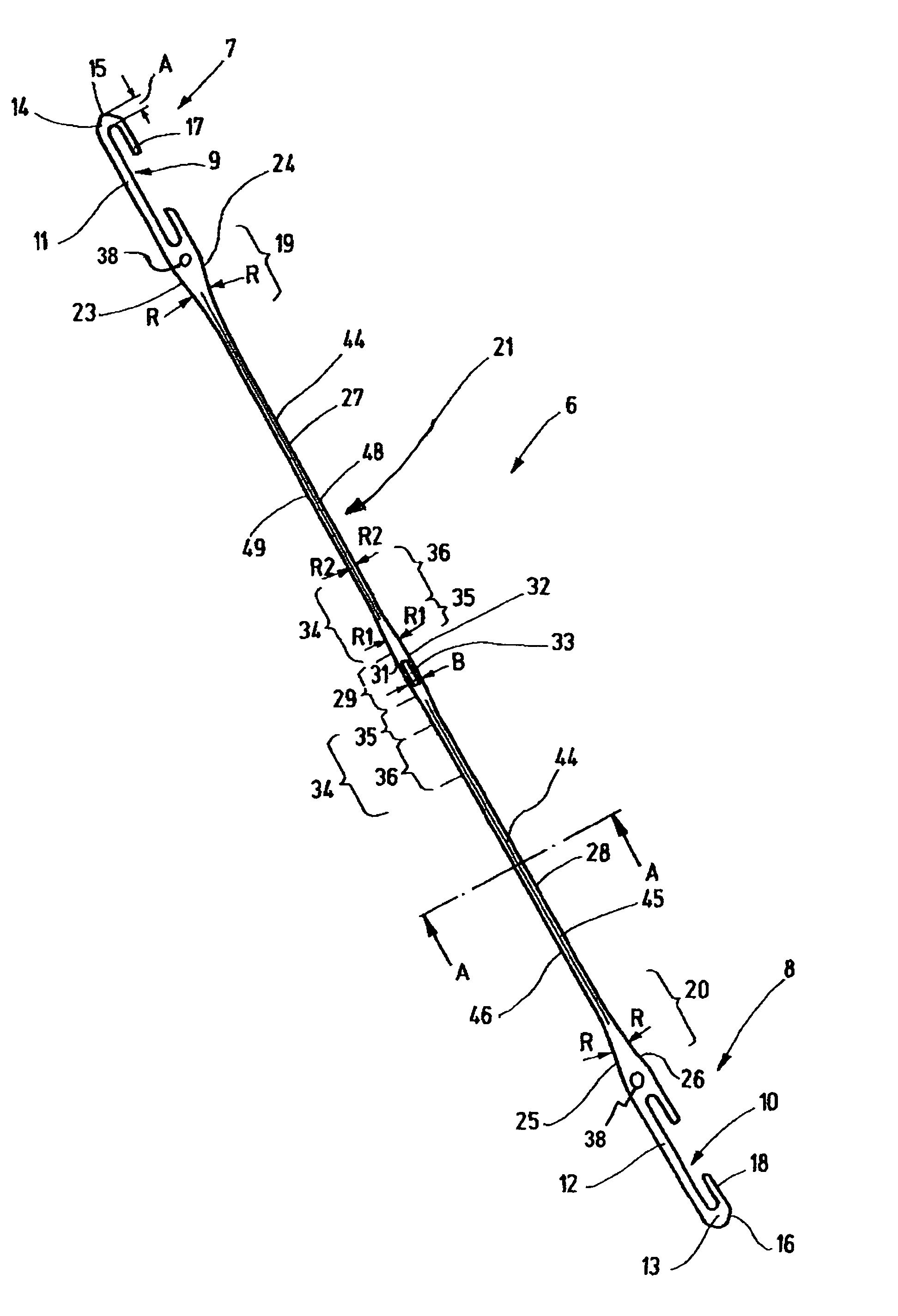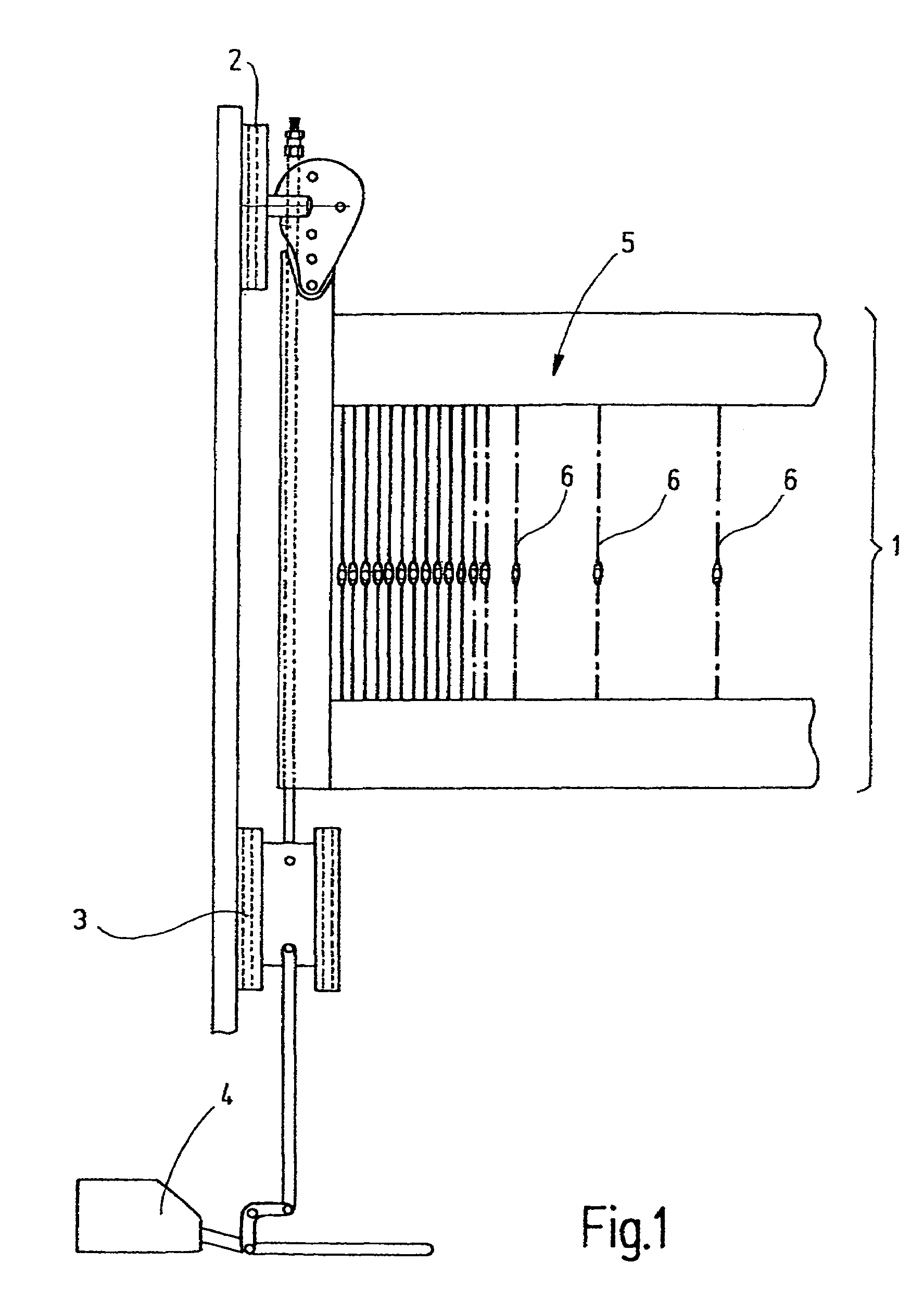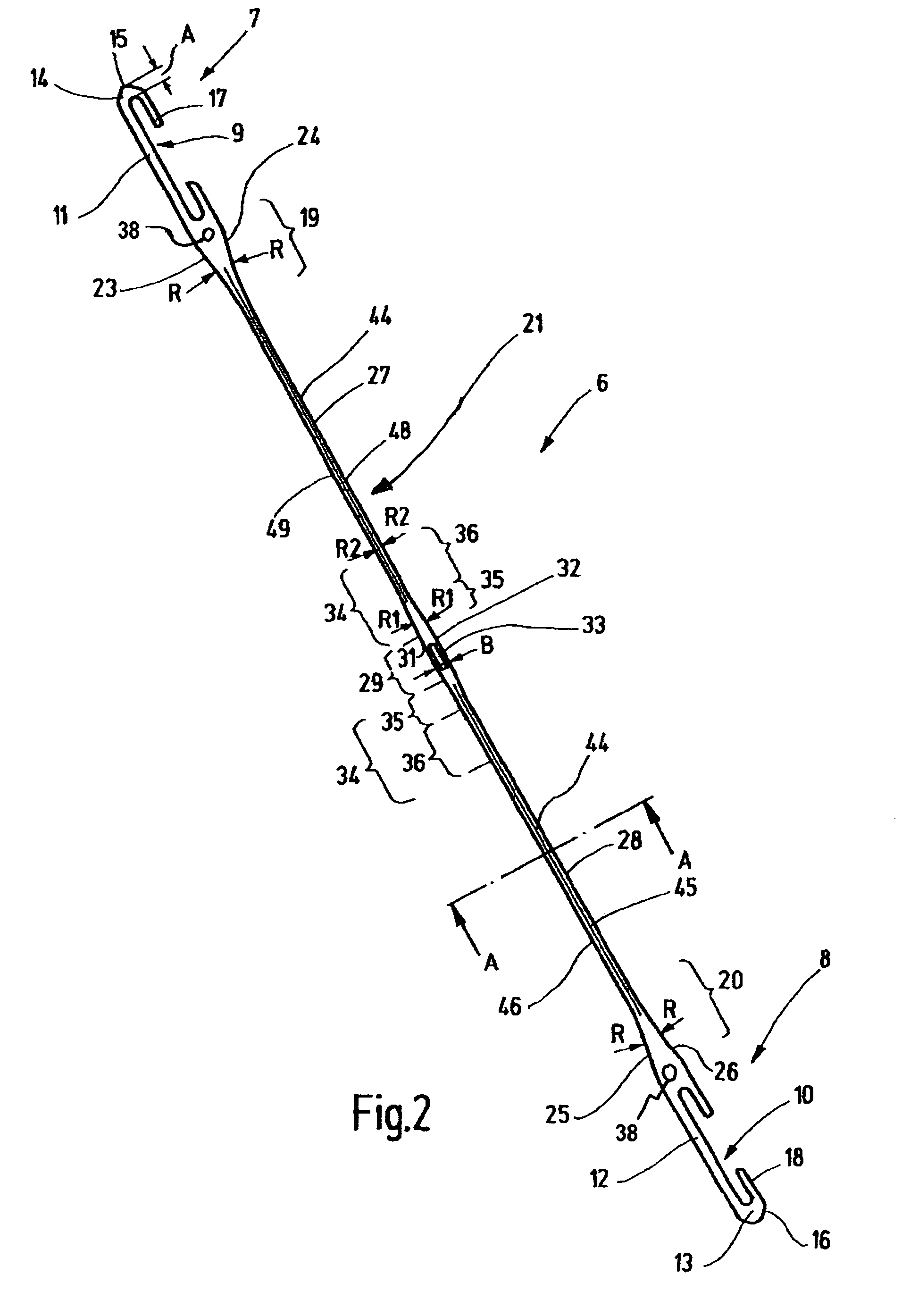Heddle
a technology of heddles and heddles, which is applied in the field of heddles, can solve the problems of increasing the mass of a heddle, increasing the load on all the shedding devices, including the heddles, and increasing the load on the shedding device, so as to increase the load-bearing capacity, reduce the mass of the heddle, and increase the operating speed of the power loom
- Summary
- Abstract
- Description
- Claims
- Application Information
AI Technical Summary
Benefits of technology
Problems solved by technology
Method used
Image
Examples
Embodiment Construction
[0024]In FIG. 1, a heddle shaft 1 is shown which is vertically movably supported in a power loom. To that end, it is connected to a linear guide device 2, 3 and, via a suitable rod linkage, to a drive mechanism 4. The heddle shaft 1 forms a frame 5, on which heddles 6 are retained. The heddles serve to form sheds in a power loom. The heddles 6 are embodied identically to one another. For purposes of illustration, a single heddle 6 is shown in FIG. 2.
[0025]The heddle 6 is a one-piece sheet-metal part of elongated basic shape. On each end, the heddle 6 has a so-called end eyelet 7, 8, which is provided with an opening 9, 10, or so-called C-shaped jaw opening. Differently shaped openings 9, 10 are also known, such as J- and O-shaped openings. Each jaw opening 9, 10 is defined by a respective straight, parallel-edged, strutlike portion 11, 12, which is adjoined by portions 13, 14 (jaw end region) extending in the form of a U. The portions 13, 14 each form one jaw end region. This region...
PUM
 Login to View More
Login to View More Abstract
Description
Claims
Application Information
 Login to View More
Login to View More - R&D
- Intellectual Property
- Life Sciences
- Materials
- Tech Scout
- Unparalleled Data Quality
- Higher Quality Content
- 60% Fewer Hallucinations
Browse by: Latest US Patents, China's latest patents, Technical Efficacy Thesaurus, Application Domain, Technology Topic, Popular Technical Reports.
© 2025 PatSnap. All rights reserved.Legal|Privacy policy|Modern Slavery Act Transparency Statement|Sitemap|About US| Contact US: help@patsnap.com



